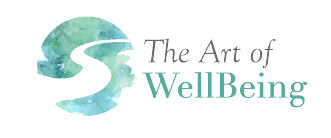Grace Bats Last
Yesterday, an unshakable sadness settled over me. A small annoyance was there, but my emotions felt disproportionate. When I told my husband I thought I was grieving, he asked, "Grieving what?"
"I don’t know," I said. "Everything."
Lately, a quiet sorrow lingers, one I know I’m not carrying alone. Many of the people I work with feel it too. Yes, life always brings hardships, but this feels different—like part of a much larger story. Fear, grief, and overwhelm spill into my coaching calls with ministry leaders. The weight in our country feels more palpable, more urgent.
In my younger years, I might have tried to numb myself to this—not out of indifference, but helplessness. What could I possibly do to change the deep suffering in a world that often seems indifferent to those who have always had less? But at 65, I find it harder to turn away. This Lent, I feel called to lean in—to connect my personal grief to the greater story unfolding around us. And in that story, I am holding on to hope. Because in the end, grace always bats last.
The larger story I long to inhabit invites me to use imagination as an instrument of hope. I may not be able to effect change on a macro scale, but I can trust in the power of small acts. Chan Hellman (University of Oklahoma professor, Ted Talk: The Science of Hope) reminds us that "hope is a social gift." It begins with a vision of the person I want to be—a wife, mother/grandmother, friend, and leadership coach—and allowing myself to be drawn toward that image. I ask: How can I serve? What is mine to do?
There is much I don’t know, much beyond my comprehension. Yet, I hold fast to Anne Lamott’s mantra: “Grace bats last.” Grace does not always arrive on our timeline or in the way we expect. It sneaks in the back door when we’ve given up. It takes the form of laughter in the middle of heartbreak, a hand reaching for ours when we feel most alone, or a quiet knowing that—even in the darkest moments—we are being held.
So, I invite my grief into conversation with practices of hope, trusting that the future will be better than today. Through small acts of kindness, laughter, and full presence with someone who is suffering, perhaps I can nurture life-giving hope for myself and others.
I want this stance in the world for myself and for all who are afraid, despairing, and overwhelmed. Through the practice of hope, may we all keep going. In her Lenten reflection for today, Kate Bowler urges us to keep moving, keep walking, keep hoping—together and for the sake of the world.
“Hope is not a feeling but a way of thinking—a process of setting realistic goals, developing pathways, and believing in one’s own agency.” — Brené Brown
“Hope is a deliberate choice when the world seems dark, relying not on optimism but on faith in the One God.” — N.T. Wright
Practicing hope with you,
Vicki
